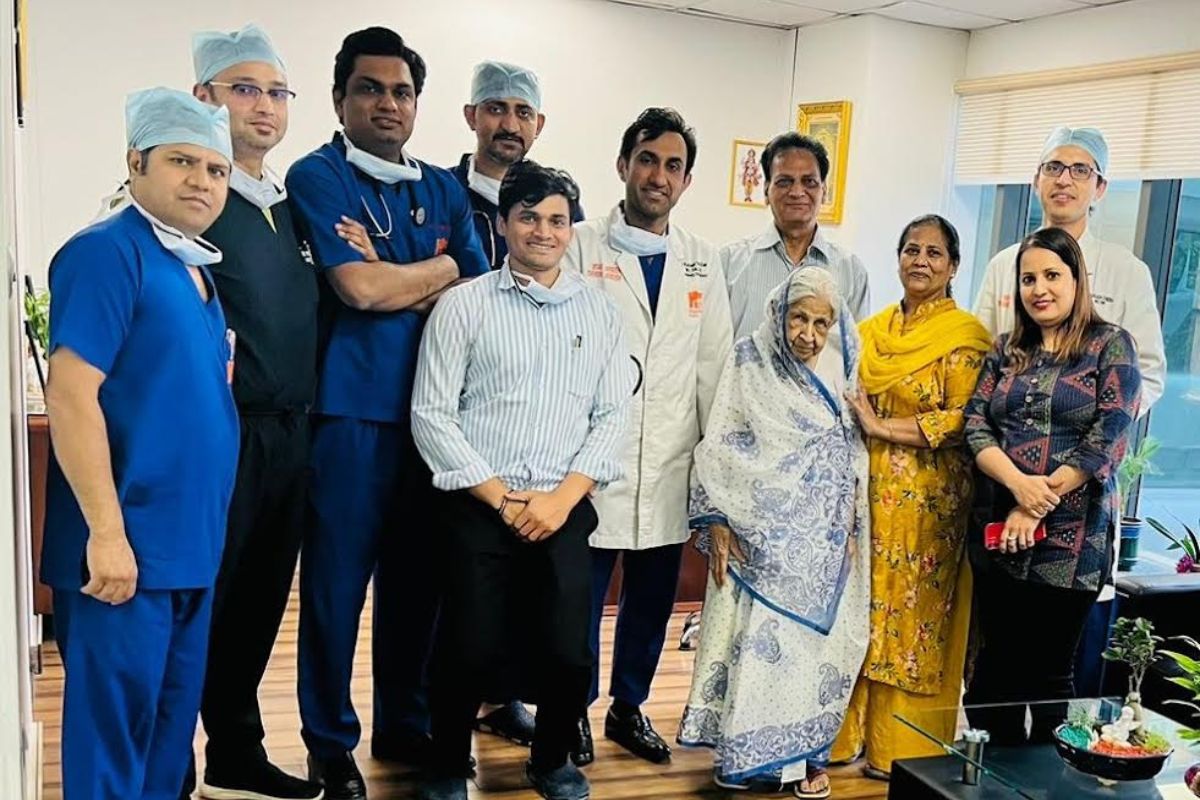Cardiologists at a hospital here have saved the life of a 93-year old woman patient who was suffering for the last one year from narrowing of the main valve of the heart and shortness of breath through a modern procedure called Transcatheter Aortic Valve Replacement (TAVI).
The patient, the wife of a freedom fighter, suffered from Aortic Stenosis, was suffering from Aortic Stenosis, a type of heart valve disease (valvular heart disease) when the valve between the lower left heart chamber and the body’s main artery (aorta) is narrowed and does not open fully. This reduces or blocks blood flow from the heart to the aorta and to the rest of the body.
Advertisement
The patient’s heart reduced its pumping efficiency to 25 per cent, the fluid started accumulating in the lungs which rendered her breathless even on minimal activity, Dr Ravindra Singh Rao, an interventional structural cardiologists specialised in TAVI, told reporters on Tuesday.
Advertisement
A major risk to applying TAVI procedure in her case was that she could face a stroke which was mitigated by use of a cerebral protection device called sentinel device, Dr Rao, said.
Eventually, a decision was take to adopt the TAVI procedure, a technique that was witnessed by the cardiologists from all across the globe assembled in Chennai. The team which conducted the operation consisted of Dr Kailash Chandra, Dr Govind Sharma and Dr Prashant Varshney besides a team of Dr Rao.
TAVI procedure is a technique to fix a valve without open heart surgery. Endoscopic sutures were deployed in the femoral (groin) artery, a big size tube was placed. Through the tube, the valve was crossed and the new valve was placed inside the old valve. The new valve started functioning immediately.
The tube was removed and the sutures were deployed to close the hole in the groin vessel. After staying in the ICU for a day, the patient was discharged after five days from the hospital, and she walked independently, breathing better and having normal sleep, Dr Rao team claimed.
TAVI has become a boon for patients suffering from aortic stenosis, and it is an established, safe and effective treatment for patients of upper age above 75-100 years, he stressed.
Advertisement
















